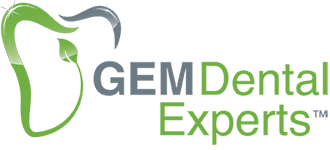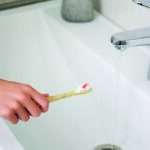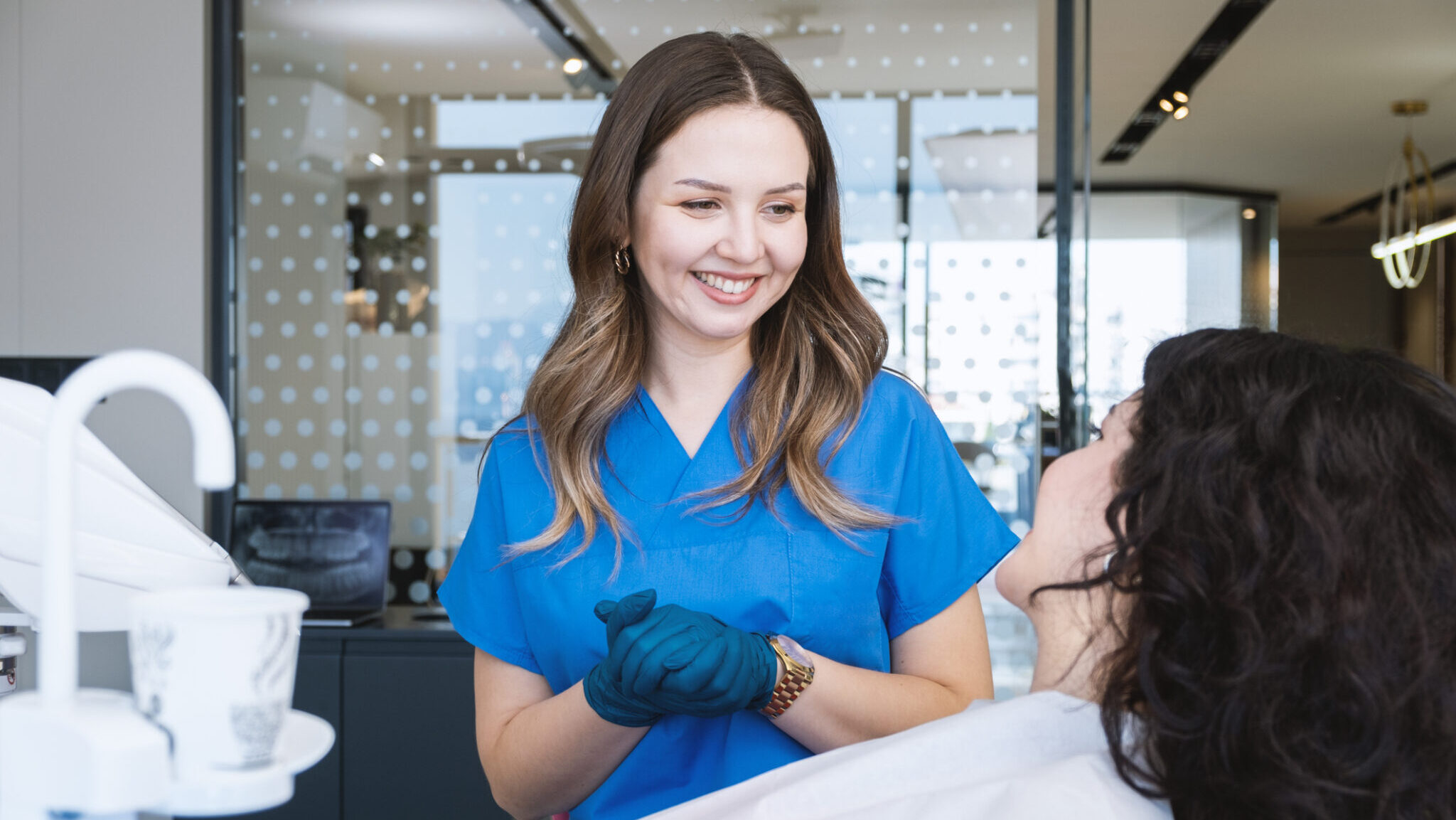November 13, 2020
by Gabriele Maycher, CEO, GEM Dental Experts Inc. BSc, PID, dip DH, RDH
As a clinical dental hygienist for 30+ years, it pains me to say this, but exceptional hygiene departments are not the norm in the dental industry. What do I mean by exceptional? I mean utilizing “best practices” in the treatment of periodontal disease resulting in optimized client outcomes (less than or equal to 3mm PD and zero bleeding).
The American Academy of Periodontogy (AAP) reports that 86% of practices do not provide the standard of care to treat periodontal disease. Healthcare professionals report not having enough time to even probe on a regular basis, and the results are, frankly, devastating to our clients: 73% of practices are not diagnosing periodontal disease, leading to what the AAP calls an “epidemic” and what is known as “supervised neglect” in the dental profession. As a full-time consultant for the past 10 years, this has been my finding as well, unfortunately.
The good news is that when given the opportunity, most hygienists want to practice according to the practice standards and codes of ethics set out by their college, but there are a lot of personal and practice barriers that get in the way of this goal. For starters, there is a lack of mentorship and practicum training for hygienists after graduation, a step that is seen as vital in other professions like medicine, architecture, law, and accounting. In some cases, a new grad may be the only hygienist in the office, armed only with his or her limited clinical experience.
So, how do we bridge the gap in our treatment protocols and procedures and get back to providing optimal client care as it’s taught in school? It starts by removing some of the common practice barriers, limiting beliefs, and mental mindsets that can hold us back from becoming truly exceptional.
BARRIERS TO AN EXCEPTIONAL HYGIENE DEPARTMENT
Lagging support from the top. When discussing the benefits of building a forward-thinking, perio-focused practice, it’s not the dental hygienists that have to be convinced. They are almost always excited about the opportunity to up their game, hone their skills, and become even more proficient care providers. Instead, I’m often in the position of convincing the dentist that building a highly efficient, proficient hygiene department is worth the time and effort—and is essential in being able to provide optimal client care. Plus, a nice by-product is substantial practice growth and revenue. But let’s face it: Unless the dentist takes the lead, it won’t happen.
In my experience, dentists tend to focus mainly on restorative care. And unless they have an affinity to periodontics, preventative care is often a neglected part of the practice. This becomes evident in my findings during chart audits. Most of the assessments collected are conducive to making a dental diagnosis but not a dental hygiene diagnosis. In most cases I am unable to determine a dental hygiene diagnosis because of insufficient radiographs to screen for all the possible periodontal conditions, the inability to see bone levels due to the type of radiographs taken, incomplete periodontal assessments, and inadequate notes.
Developing systems and processes to support the practice’s vision of an exceptional hygiene department is essential. Consider getting an assistant for your hygiene team so more time can be dedicated to client care and ensure that all team members—not just your hygiene team—have been a part of the learning process in developing and implementing your vision. A great first step is taking professional development courses together so everyone is aligned to the same message and language.
As for the hygiene team, you need to get back to the basics of what you learned in school. Implement ADPIE, the process of care, the way it was taught, comprehensively, every step of the way. Without proper Assessments you will not be able to determine an accurate Diagnosis, a logical Treatment Plan, effective Implementation, and your Evaluation will be pointless. Undervaluing your role as a health care provider. Most dental hygienist don’t value what they do. I hear it in the language they use, “you have a little bit of inflammation,” which only minimizes their role and the message we are trying to get across which is, “periodontal disease is a serious condition.” We know that 70-80% of clients have some level of periodontal disease and more than 90% of all systemic diseases have oral manifestations, which can lead to organ damage. By now we should understand that the impact of a skilled hygienist goes far beyond providing a “cleaning” and that by optimizing oral health we also optimize overall health.
The team needs to make a commitment to stop using any verbiage that minimizes the impact of periodontal disease. As a profession, we have an ethical responsibly to inform the client of his or her condition and its consequences orally and systemically.
Settling for uninformed consent. In most practices, treatment is based on insurance support rather than client needs because of our limiting beliefs about our clients and what they will and will not pay for. Worse yet hygienists allow clients to dictate treatment: “I only want what my insurance covers.” The truth is, our clients do have the right to choose their treatment and be active participants in their treatment, but unless a hygienist has explained the client’s periodontal condition, treatment options needed to achieve health, and the prognosis of not receiving treatment, the clinician has not received “informed consent” or “informed refusal” to treatment. This not only puts the hygienist in a position of liability but contravenes our code of ethics by taking away the patient’s right to choose. The practice of allowing insurance support and clients to dictate treatment is so engrained in clinicians that it takes most of my program to de-program this limiting belief and mindset. Believe me when I say, clients will pay for treatment over and above their insurance support if value is created.
Unfortunately, selling “services” rather than “client outcomes” will never create value in our clients’ minds, and the price will always seem too high. You can start to change this dynamic by discussing what your treatment is trying to achieve, explain what needs to be done to get the desired outcome and give rationale based on the literature. From an administrative standpoint, your office mission statement and policies should adopt this mantra of focusing on client outcomes, and your team should be empowered to work toward achieving this goal.
Avoiding “the talk.” Hygienists are not comfortable talking about money, instead leaving it to the front end. But to get informed consent to treatment, the discussion about “how much is it going to cost” needs to happen. In the end, there still may be a difference between your recommended treatment and their accepted treatment based on insurance support and how much the client can afford to pay out of pocket. Remember, insurance support was not designed to treat disease, so support for dental or periodontal disease will likely be insufficient.
Instead of using verbiage that emphasizes the client’s insufficient insurance support, get excited about what their insurance does cover, emphasizing the fact that it will pay a portion of their necessary treatment.
Financial discussions should not solely be left to administrators or treatment coordinators. Why? Because it is not in their scope of practice to offer alternative treatment options if a client is unable to afford the hygienist’s recommended treatment. Only a hygienist can do this. So with no other options and no further discussions with the hygienist, the client may simply leave without booking an appointment. This is the worst-case scenario, and it happens all the time.
Not understanding the term “best practices.” This term is used in every profession but do we really understand what it means? The definition of “best practices” is: Treatments and interventions that result in consistent superior client outcomes which are measurable, reproducible, and based on the latest most current evidence–based literature research data, experience, and expert opinion. Knowing and integrating the new global 2018 AAP Periodontal Classification into the practice, at this time, would be an example of “best practices.” So, if you have not yet integrated the new system you are not providing best practices.
In an article by Dr. Mark Lin, “Bridging the Gap,” he reports that “it takes 10 to 20 years for new research to be reflected in everyday clinical practice.” I know this to be true through my own consulting experience. Rarely, if ever, have I read in clinical notes any reference to the last 1999 AAP Periodontal Classification, which was around for 20 years before being replace by the new classification.
My favourite saying, as an educator is by Stephen Hawking, “The greatest enemy of knowledge is not ignorance. It is the illusion of knowledge.” Remember that when we graduate, we promise to our profession that we will be lifelong learners. Knowing, understanding, and implementing best practices is essential to providing exceptional client care. Based on the literature, these are the metrics that an exceptional hygiene department should strive for:
- Since most client have some level of periodontal disease, 70-80% of new clients should be in active nonsurgical periodontal therapy and not just getting a “cleaning.”
- Depending on your practice demographics, approximately 65% of clients have periodontitis over 65 years of age. Of those clients, 48% have moderate to severe periodontitis and should receive quadrant or sextant scaling to achieve endpoint.
- Once a periodontitis client always a periodontitis client; only managed never cured. We know more frequent maintenance appointments will sustain longer periods of stability so 50% plus of the practice’s clients should be on a 3M maintenance program.
- Assessments for healthy and stable periodontitis clients is less than or equal to 4mm PD, less than 10% BOP and no 4mm pockets bleeding, otherwise the client should be put back into active nonsurgical periodontal therapy because of recurrence of their periodontitis.
- Periodontitis clients should have a full mouth series to establish a baseline, to determine severity, complexity, and as direct evidence for the progression of the disease.
Are these metrics possible? Not only does the literature support these numbers, but the practices that I have worked with have achieved them. So the answer is, absolutely!
I strongly recommend your team learn and integrate the new 2018 AAP Periodontal Classification into the practice. With the new global classification, the future of periodontal therapy is moving away from an antiquated, biofilm-based model (which we now know only accounts for 20% of the direct risk of developing periodontitis) to a new holistic medical model that includes biofilms
as well as predisposing and modifying factors. The new classification finally encompasses both oral and systemic factors in the treatment and prognosis of periodontal disease.
THE BOTTOM LINE
When dental hygienists are encouraged and supported to work according to their practice standards and codes of ethics with a focus on optimal client outcomes, practice growth will explode! Not only will you have that elusive exceptional dental hygiene department, you’ll find tremendous satisfaction in your role as an outstanding healthcare professional.
References:
- Foundations of Periodontics for the Dental Hygienist, 5th Edition, Jill S. Nield-Gehrig, Donald E. Willmann, 2019
- Oral Health Magazine, Nov 2019, “Bridging the Gap”, by Dr. Mark H.E. Lin, Editorial
- 2017 World Workshop Articles
- J Clin Periodontal. 2018;89(Supple 1):s9-S16. Periodontal Health, Niklaus P. Lang, P. Mark Bartold
- J Clin Periodontol. 2018;45(Suppl 20):S68-S77. Periodontal Health and gingival disease and conditions on an intact and a reduced periodontium: Consensus report workgroup 1 of 2017 World Workshop on the Classification of Periodontal and Peri-Implant Health. Chapple_et_al-2018.JP
- J Clin Periodontol. 2018;89(Suppl 1):S159-S172. Staging and grading of periodontitis: Framework and proposal of a new classification and case definition. Tonetti_et_al-2018-JP.
- J Clin Periodontol. 2018;45(Suppl 20):S162-S170. Periodontitis: Consensus report of workgroup 2 of the 2017 World Workshop on the Classification of Periodontal and Peri-Implant Disease and Conditions. Papapanou_et_al-2018-JP.







Leave a Reply
You must be logged in to post a comment.